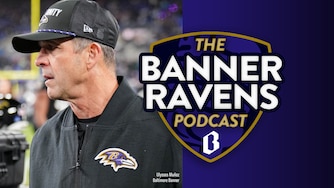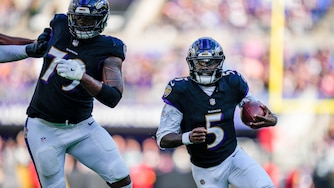Last December, a friend in the Washington, D.C., area told me she planned to order her hard-to-shop-for husband some steaks from renowned steakhouse Peter Luger for Christmas.
“Um, why would you do that?,” I asked, “when you can go to J.W. Treuth & Sons?”
Through third-party sellers, J.W. Treuth & Sons, the Catonsville slaughterhouse and butchery, supplies meats to some of the world’s top steakhouses in New York and Chicago. Helpfully, for people in the Maryland and D.C. area, they also sell beef and other proteins at their on-site butcher shop. The whole operation looks a bit like something straight out of the 19th century.
Times may change, but the meat industry doesn’t modernize much, says owner Jason Trippett. His wood-paneled office is cooled by a dusty window unit; a black-and-white portrait of the company’s founder hangs overhead. “You’re fighting the world,” he said. In the meat markets of New York City, men carry huge slabs of meat on their shoulders. Handwritten tickets are the norm.
Meat has been coming out of this place since around the 1860s, back when all of the surrounding area was farmland and cattle were driven into the pens by hoof. J.W. Treuth “just lasted,” said Trippett, “where most of these places kind of went out of business.”

The company’s endurance is also evidence of shrewd specialization in kosher and prime steak, which J.W. Treuth labels “America’s best beef.” “We don’t compete with the big guys, because we’re competing on stuff that they don’t really produce,” Trippett said. And this meat winds up in some of the best steakhouses in the world.
Read More
Now, before I have representatives from Peter Luger calling to complain, I should note that while some of the meat from J.W. Treuth & Sons does eventually go to the Brooklyn steakhouse, it’s not exactly the same steak. Before serving, the Luger steakhouse dry-ages its beef, which Trippett reminds me is really a controlled rotting of the steak (yummy!) that gives it an earthy, nutty flavor. “It’s a completely different product when it gets done,” he said. Treuth also has a dry-ager on-site, but Trippett says the musky taste isn’t for everyone.
The key to producing America’s best beef, Trippett says, is J.W. Treuth’s long relationship with its cattle farmers, going back 40 or 50 years. The bulk of the bovines come to Baltimore County from Amish farms in Lancaster, Pennsylvania.
Trippett takes me out to the holding pen to admire the cows. They’re truly beautiful animals, big and fat with silky black coats. Seeing us, the cows turn away from the fence, huddling in the corner. This is where I’m going to warn my vegetarian readers that you may want to go ahead and skip this week’s column, if you haven’t stopped long ago. Because in just a few days, these gorgeous beasts will meet their maker.
Four days a week, rabbis drive down to Catonsville to supervise the processing of the animals. I have come to J.W. Treuth on a Friday, which happens to be a “no kill” day because the rabbis won’t make it back to New York before sundown, when the Sabbath begins.
In addition to the rabbis, several USDA graders also work on the premises, grading the carcasses either select, choice or prime. Where “prime” beef — that luscious, well-marbled meat — makes up less than 10% of the output of larger processors, at J.W. Treuth, around half, and sometimes significantly more, of the beef is actually prime.
Before going into the meat business, Trippett was a private equity consultant. Tired of traveling, he decided to go find a company to run himself. He and his brother purchased Hagerstown’s Hoffman’s Quality Meats, and years later, in 2014, the duo took over J.W. Treuth & Sons, which had been a family-run operation for generations. (The founder’s great-grandson, John Treuth, still works there.) A few years ago, Trippett’s brother left the company. On his own, Trippett launched a new branch of the business called J.W. Treuth Provisions, which sources local products for restaurants and can even hunt down hard-to-find meats such as bear, kangaroo and boa constrictor.
While only three cuts of meat typically wind up in restaurants — the ribeye, the filet mignon and the New York strip — Trippett stresses that “there’s so many other wonderful pieces of meat on the animal that no one ever takes advantage of.” In the butcher shop, he points me to the tri-tip, a fat piece of meat about the size of my laptop. I decided to purchase one and was shocked to see it was only $16 for what felt like enough beef to feed a family of eight.
My husband roasted it for dinner following a recipe he found online, and it was juicy, tender and flavorful. Even our baby, who just started eating solids, seemed to love it, shoving a big piece in his mouth to suck the juices. (I know it sounds bonkers to give steak to a baby, but I swear our pediatrician told me to. Good source of iron.) Days later, we’re still eating steak sandwiches for lunch.
My new motto: Why would I order a New York strip when I can just pick up an Oella tri-tip?




Comments
Welcome to The Banner's subscriber-only commenting community. Please review our community guidelines.